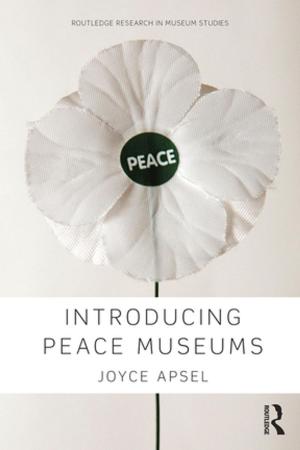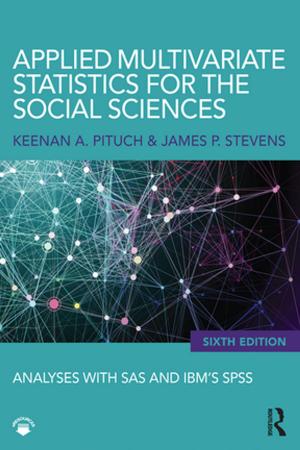Introduction to Contemporary Psychoanalysis
Defining terms and building bridges
Nonfiction, Health & Well Being, Psychology, Psychoanalysis, Mental Health| Author: | ISBN: | 9781351718394 | |
| Publisher: | Taylor and Francis | Publication: | September 14, 2017 |
| Imprint: | Routledge | Language: | English |
| Author: | |
| ISBN: | 9781351718394 |
| Publisher: | Taylor and Francis |
| Publication: | September 14, 2017 |
| Imprint: | Routledge |
| Language: | English |
This book provides a clear introduction to the main contemporary psychoanalytic theoretical perspectives. Psychoanalysis is often thought of as an obscure and outdated method, and yet those familiar with it recognize the profound value of psychoanalytic theory and technique. Part of the obscurity may come from psychoanalytic language itself, which is often impenetrable. The complexity of the subject matter has lent itself to a confusion of tongues and yet, at base, psychoanalysis remains an earnest attempt to make sense of and ease human distress.
Introduction to Contemporary Psychoanalysis seeks to make this rich wealth of information more accessible to clinicians and trainees. Psychoanalytic clinicians from various schools here describe the key ideas that underlie their particular perspective, helping the reader to see how they apply those ideas in their clinical work. Inviting the contributors to speak about their actual practice, rather than merely providing an overview, this book helps the reader to see common threads that run across perspectives, but also to recognize ways in which the different lenses from each of the perspectives inform interventions Through brief vignettes, the reader is offered an experience-near sense of what it might be like to apply those ideas in their own work. The contributors also note the limits or weaknesses of their particular theory, inviting the reader to consider the broader spectrum of these diverse offerings so that the benefits of each might be more visible.
Introduction to Contemporary Psychoanalysis offers readers the richness and diversity of psychoanalytic theory and technique, so that the advantages of each particular lens might be visible and accessible as a further tool in their clinical work. This novel, comparative work will be an essential text for any psychoanalyst or psychoanalytically inclined therapist in training, as well as clinicians and those who teach psychoanalytic theory and technique.
This book provides a clear introduction to the main contemporary psychoanalytic theoretical perspectives. Psychoanalysis is often thought of as an obscure and outdated method, and yet those familiar with it recognize the profound value of psychoanalytic theory and technique. Part of the obscurity may come from psychoanalytic language itself, which is often impenetrable. The complexity of the subject matter has lent itself to a confusion of tongues and yet, at base, psychoanalysis remains an earnest attempt to make sense of and ease human distress.
Introduction to Contemporary Psychoanalysis seeks to make this rich wealth of information more accessible to clinicians and trainees. Psychoanalytic clinicians from various schools here describe the key ideas that underlie their particular perspective, helping the reader to see how they apply those ideas in their clinical work. Inviting the contributors to speak about their actual practice, rather than merely providing an overview, this book helps the reader to see common threads that run across perspectives, but also to recognize ways in which the different lenses from each of the perspectives inform interventions Through brief vignettes, the reader is offered an experience-near sense of what it might be like to apply those ideas in their own work. The contributors also note the limits or weaknesses of their particular theory, inviting the reader to consider the broader spectrum of these diverse offerings so that the benefits of each might be more visible.
Introduction to Contemporary Psychoanalysis offers readers the richness and diversity of psychoanalytic theory and technique, so that the advantages of each particular lens might be visible and accessible as a further tool in their clinical work. This novel, comparative work will be an essential text for any psychoanalyst or psychoanalytically inclined therapist in training, as well as clinicians and those who teach psychoanalytic theory and technique.















